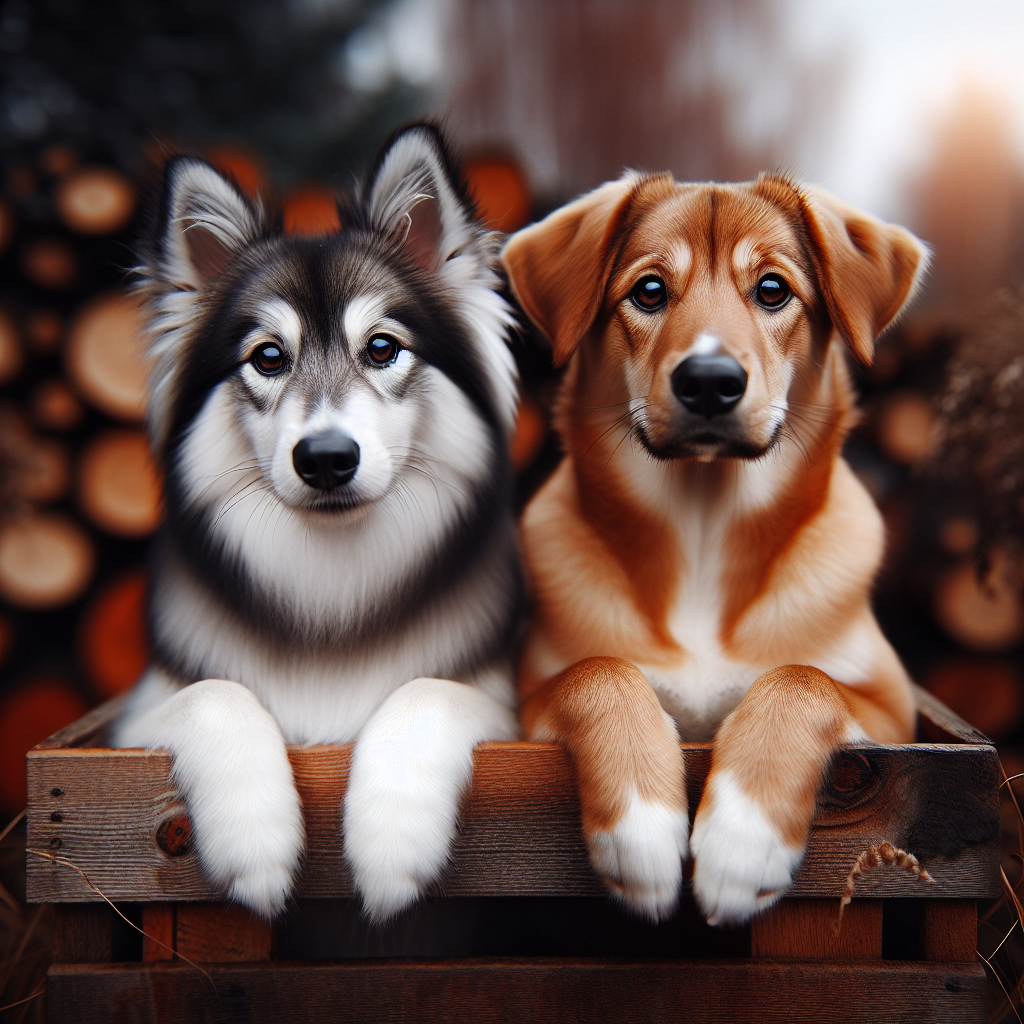Have you ever wondered what dogs looked like a million years ago? As one of the earliest domesticated animals, the evolution of dogs has been a long and fascinating journey. Through the study of fossils and genetic evidence, scientists have been able to piece together the appearance of these ancient canines. In this article, we will explore the physical characteristics of dogs from a million years ago, shedding light on how these beloved pets have evolved over time.
From the towering dire wolves to the smaller, more agile ancestors of modern-day wolves, ancient dogs came in a variety of shapes and sizes. Their skeletal remains provide clues about their diet, lifestyle, and overall appearance. By examining the features of these ancient dogs, researchers have been able to gain insights into their behavior and evolutionary history. Join us as we delve into the world of prehistoric canines and learn more about what dogs looked like a million years ago. In the following sections, we will explore the different species of ancient dogs, their physical characteristics, and the environmental factors that shaped their evolution.
What Did Dogs Look Like 1,000,000 Years Ago?
Discover the ancient appearance of our canine companions from a million years ago. Uncover the evolutionary journey that shaped the physical characteristics of dogs to what we know today. Learn how dogs have adapted to survive and thrive in their environments over the millennia. Explore the fascinating changes that have occurred in the development of dogs over time. For a detailed examination of what dogs looked like one million years ago, continue reading below.
What did dogs look like 1000000 years ago?
Dogs have been evolving alongside humans for hundreds of thousands of years, with their origins traced back to ancient wolves. One million years ago, dogs looked very different from the domesticated pets we see today. These ancient dogs were much larger and more robust, with sharp teeth and powerful jaws suited for hunting large prey.
1. Size and Build:
Ancient dogs from one million years ago were much larger in size compared to modern breeds. They had a more wolf-like appearance, with long legs and a lean body built for speed and strength. These dogs were well-adapted for survival in harsh prehistoric environments.
2. Teeth and Jaws:
The teeth and jaws of dogs one million years ago were designed for hunting and tearing apart prey. Their sharp teeth and powerful jaws allowed them to take down larger animals for food. These ancient dogs were carnivorous predators, relying on their hunting abilities for survival.
3. Fur and Coat:
The fur and coat of ancient dogs were likely thicker and more protective than that of modern breeds. This adaptation helped them withstand extreme weather conditions and provided camouflage for hunting in the wild. Their coats would have been well-suited for blending into their natural surroundings.
4. Behavior and Social Structure:
Ancient dogs lived in packs, similar to modern wolves. They relied on social cooperation and teamwork to secure food and protect their territory. Their pack mentality and hierarchical structure helped them navigate the challenges of survival in a competitive natural world.
5. Evolutionary Changes:
Over the course of one million years, dogs have undergone significant evolutionary changes. From their ancestors, the ancient wolves, dogs have evolved into a wide variety of breeds with diverse shapes, sizes, and characteristics. The process of domestication has played a key role in shaping the appearance and behavior of modern dogs.
Statistic:
According to recent fossil evidence and genetic studies, researchers estimate that dogs diverged from wolves around 20,000 to 40,000 years ago. This divergence marks the beginning of the domestication process that led to the wide diversity of dog breeds we see today.
A: Fossil records and genetic studies provide us with information about the appearance of ancient dogs.
A: Ancient dogs had a more wolf-like appearance with longer legs, larger heads, and a thicker coat compared to modern breeds.
A: It is likely that ancient dogs exhibited similar hunting and pack behavior to modern dogs, as they were also social animals.
A: Ancient dogs were not domesticated in the same way as modern dogs, but they likely developed a relationship with humans for hunting and protection.
A: Ancient dogs likely had a diet that consisted of raw meat and scavenged food, similar to wild wolves.
A: Over time, selective breeding by humans led to the development of different dog breeds with specific characteristics and traits.
A: Ancient dogs varied in size, with some being larger than modern breeds due to natural selection and environmental factors.
A: Ancient dogs adapted to various habitats such as forests, grasslands, and mountains, depending on their prey and environmental conditions.
A: Some ancient dogs had unique physical features such as a double coat or longer snouts, which may have been lost in the breeding process for specific traits.
A: Genetic studies have shown that modern dogs share a common ancestor with ancient wolves, indicating their evolutionary relationship.
Conclusion
In conclusion, dogs from one million years ago bore more resemblance to modern-day wolves than to the domesticated canines we are familiar with today. They likely had strong, lean bodies, powerful jaws, and sharp teeth suited for hunting and surviving in the wild. Despite the similarities to their wolf ancestors, these ancient dogs exhibited unique adaptations that set them apart, such as their smaller size and potentially more social nature.
Research into the evolutionary history of dogs continues to unveil the fascinating journey these animals have undergone over millions of years. By studying ancient fossils and genetic evidence, scientists can reconstruct the appearance and behavior of prehistoric dogs, shedding light on their adaptation to changing environments and interactions with early human populations. As our understanding of dog evolution deepens, we gain a greater appreciation for the complex interplay between humans and their canine companions throughout history.




